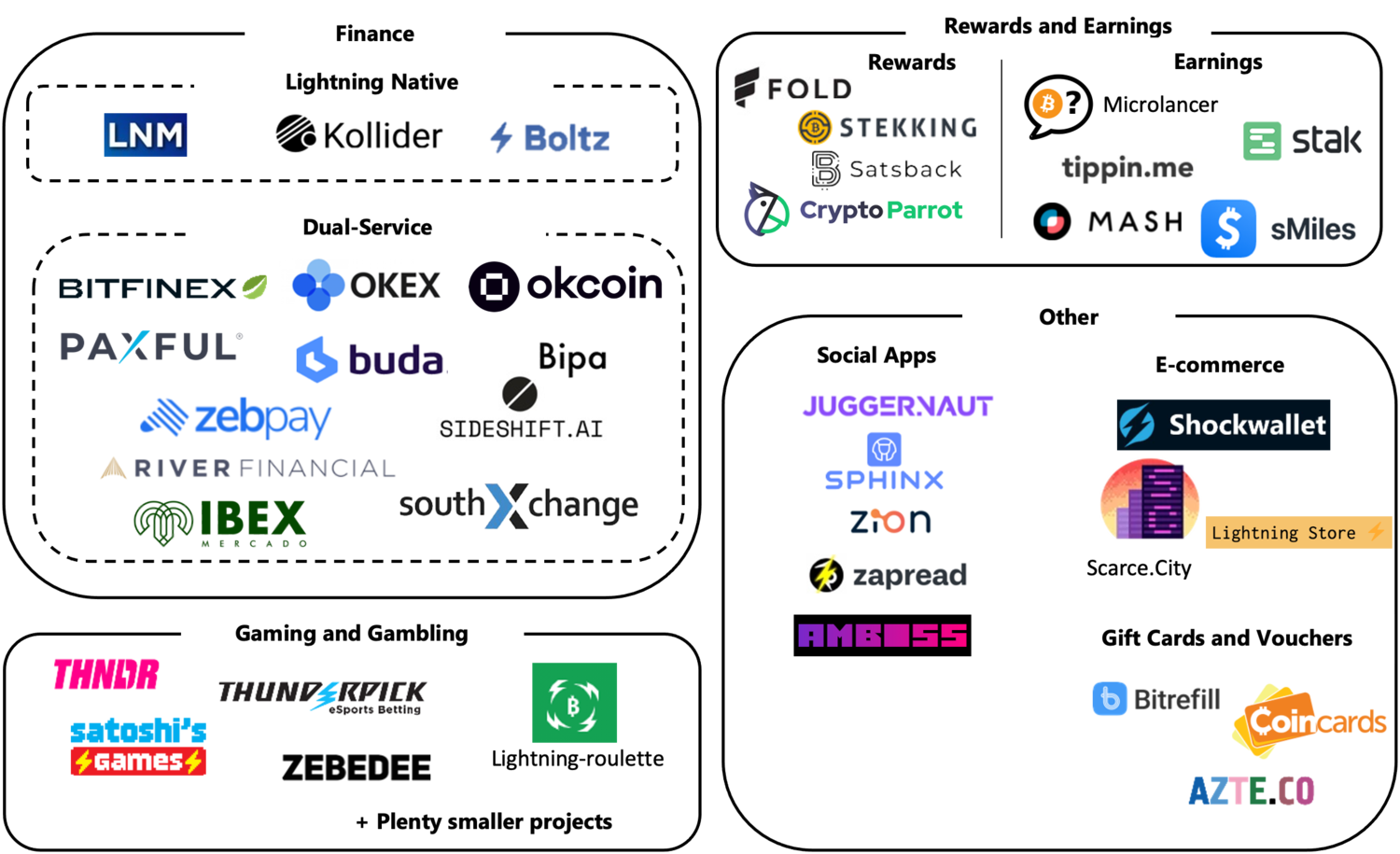
Preview
Technical foundation
The technical foundation is listed at the top of our ecosystem, and this is not by coincidence. At the very core of the Lightning Network ecosystem lays a technical foundation of code implementations, which everything else in the Lightning network builds off. The key ideas behind the Lightning Network were first described in a draft white paper authored by Joseph Poon and Thaddeus Dryja in 2015, but it would take three years to translate the concept into a working code. There is no specific Lightning Network company; it is an open protocol. However, there are three key developing teams behind the interoperative implementations of the Lightning Network technology: San Francisco-based Lightning Labs and Blockstream and Paris-based ACINQ. The different implementations maintain interoperability by conforming to the Lightning Network specifications, called BOLT (Basis of Lightning Technology). The Lightning Network specification is maintained and developed through a community effort.For the Lightning Network to function, however technically sound you are, some more pieces than the implementations must be in place. Put simply, you would need the network part of the Lightning Network to be in place. The key ingredient is a well-connected network with efficient payment paths. Routing hubs, node management, and liquidity solutions all play a vital role in maintaining an efficient and well-connected network.Payment solutions and savings – making the Lightning Network accessible

Preview
Commerce - Something to spend your sats on

Preview
